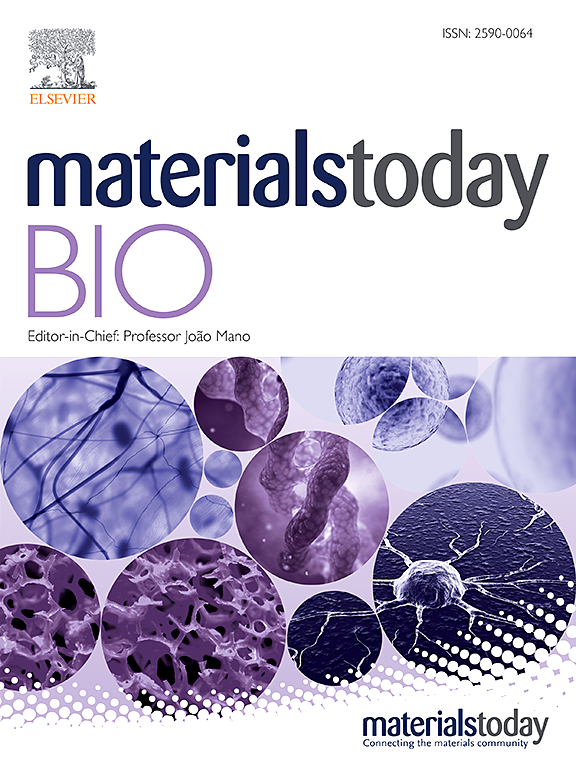Click chemistry-enabled gold nanorods for sensitive detection and viability evaluation of copper(II)-reducing bacteria
IF 8.7
1区 医学
Q1 ENGINEERING, BIOMEDICAL
引用次数: 0
Abstract
The rise of antibiotic resistance poses a significant and ongoing challenge to public health, with pathogenic bacteria remaining a persistent threat. Traditional culture methods, while considered the gold standard for bacterial detection and viability assessment, are time-consuming and labor-intensive. To address this limitation, we developed a novel point-of-care (POC) detection method leveraging citrate- and alkyne-modified gold nanorods (AuNRs) synthesized with click chemistry properties. These AuNRs exhibit superior biocompatibility and enhanced quantitative performance compared to conventional surfactant-modified AuNRs. Our method, termed AuNRs–bacteria-initiated click chemistry (AuNRs–BICC), detects CuII-reducing bacteria by quantifying AuNRs bound to a biosensing interface via bacteria-mediated CuII reduction to CuI and subsequent click chemistry with biosensing interface of azide modifications. Using dark-field microscopy (DFM), we demonstrated a strong linear correlation between AuNR counts and the logarithm of bacterial concentration for both Gram-negative Escherichia coli (including KPC-2-expressing antibiotic-resistant strains) and Gram-positive Staphylococcus aureus across a range of 101 to 107 cells, achieving a remarkable detection limit of 101 cells. The AuNRs–BICC biosensor exhibits high selectivity for target bacterial strains and provides rapid detection within 3 h. Furthermore, it can assess bacterial viability in the presence of various antibiotics, including meropenem, ceftriaxone and tetracycline, suggesting its potential for rapid antibiotic susceptibility testing and facilitating timely clinical intervention for infectious diseases.

求助全文
约1分钟内获得全文
求助全文
来源期刊

Materials Today Bio
Multiple-
CiteScore
8.30
自引率
4.90%
发文量
303
审稿时长
30 days
期刊介绍:
Materials Today Bio is a multidisciplinary journal that specializes in the intersection between biology and materials science, chemistry, physics, engineering, and medicine. It covers various aspects such as the design and assembly of new structures, their interaction with biological systems, functionalization, bioimaging, therapies, and diagnostics in healthcare. The journal aims to showcase the most significant advancements and discoveries in this field. As part of the Materials Today family, Materials Today Bio provides rigorous peer review, quick decision-making, and high visibility for authors. It is indexed in Scopus, PubMed Central, Emerging Sources, Citation Index (ESCI), and Directory of Open Access Journals (DOAJ).
 求助内容:
求助内容: 应助结果提醒方式:
应助结果提醒方式:


